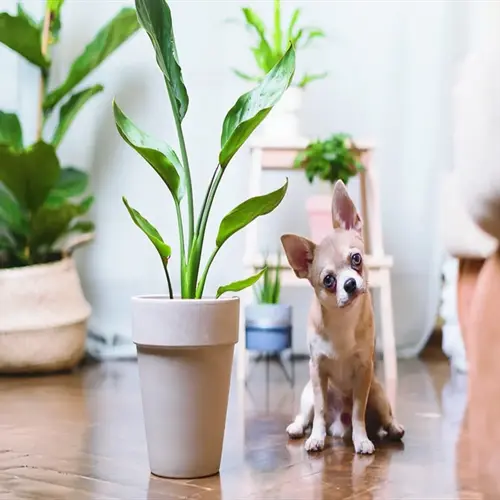Cat Coat Patterns: A Visual Guide

Written by
Elin Eriksson
Reviewed by
Prof. David Walsh, Ph.D.The patterns of a cat's fur coat are determined by a combination of more than twenty separate interacting genetic factors and mechanisms
Tabby patterns include marbled or classic, striped or mackerel, and spotted tabby patterns present in every tabby
Bicolor patterns require a minimum of one-third of the coat to be white fur combined with another color fur
Tortoiseshell patterns contain black/orange, and calico patterns add separate patches of distinct white to the tricolor fur
Specialized patterns like colorpoint or chinchilla show genetic expression at both the gene and coat color level
Patterns of a cat's coat do not indicate feline personality or disposition, according to research
Article Navigation
Abstract patterns of cat coats are living creations of artistic brushstrokes created by the genetic makeup of cats. These naturally occurring designer patterns exhibit an incredible diversity of traits, which is evident in the different breeds of these animals. Core patterns will be explored herein. You will learn some science about colors, and we will debunk some false premises about the coloration of fur that produces different personality traits.
Five fundamental categories shape the base of feline markings. Tabby is characterized by conspicuous markings, such as the M mark on the forehead. Bichrome, with white and other colors. Tortoiseshell presents an individual blending of black and orange. Calico gives an additional mark by introducing white for the powers of three. Specialized patterns such as colorpoint are affected by variations in temperature.
Two types of melanin provide the colors. Eumelanin is responsible for the black and brown colors. Pheomelanin produces the orange and cream colors. Laws of inheritance determine the distribution of the pigments. The combination of the genes received from the parents determines how this color will appear on the cat's fur.
Genetics of Cat Coat Patterns
Two pigments provide the color of the cat's coat: eumelanin produces black and brown pigments, and pheomelanin produces red and yellow pigments. It is the reaction of these various pigments that cause every pattern that you notice in cats. The various pigments are like the paint ingredients. The genes determine the mixture and spread of these ingredients.
Kittens receive their pigmentation genes from both parents. Think of it this way, they received two recipe cards. One from dad and one from mom. It is the combination of these cards that gives rise to several new patterns. Some of these are dominant while others are recessive.
Temperature-sensitive albinism results in colorpoint patterns. Colder areas of the body (ears, paws, etc.) develop darker color shades while warmer areas remain lighter. This genetic condition is what causes Siamese cats to exhibit unique point coloring.
The KIT gene is responsible for white markings. It acts like an eraser on pigment. Where it is active, it produces white markings in the form of spots or large splotches. This gene accounts for bicolor and tuxedo patterns. It is also important in the formation of calico.
Inheritance Patterns
- Gene Pair Transmission: Each parent contributes alleles determining dominant/recessive traits
- Sex-Linked Expression: Orange/black colors tied to X chromosome explain tortoiseshell females
- Polygenic Traits: Multiple genes interact to create complex patterns like rosetted tabbies
- Epigenetic Factors: Environmental influences during development affect pattern manifestation
Special Genetic Cases
- Tortoiseshell Males: Rare XXY chromosome configuration enables female pattern in males
- Salmiak Mutation: 2024-discovered gene reverses typical smoke pattern pigment distribution
- Chimerism: Fused embryos create dual-DNA coats with asymmetrical color distribution
- Modifier Genes: Secondary genes alter primary pattern expression creating unique variations
Melanin Production
- Eumelanin Development: Determined by B gene series with dominant/recessive inheritance traits
- Pheomelanin Expression: Controlled by O gene located on X chromosome creating sex-linked colors
- Dilution Effects: Recessive d gene lightens black to gray and orange to cream shades
- Combination Outcomes: Interaction between pigment genes creates complex color variations
Pattern Formation
- Tabby Markings: Agouti gene (A) enables banding while non-agouti (a) creates solid coats
- White Spotting: KIT gene mutation degree determines tuxedo, van, or harlequin patterns
- Temperature Sensitivity: Tyrosinase enzyme mutation causes point-restricted pigment in Siamese cats
- Hair Shaft Distribution: Gradual pigment deposition creates smoke and shaded effects
Breed-Specific Expressions
- Bengal Rosettes: Selective breeding enhances spotted tabby contrast patterns
- Persian Chinchilla: Frosted tip effect from extreme selective shading genetics
- Maine Coon Smoke: Thick double coat amplifies smoke pattern visibility
- Abyssinian Ticking: Uniform agouti banding creates signature ticked appearance
Tabby Patterns: The Feline Classic
Each tabby cat wears a signature mark from nature. That distinct M shape which is on their forehead is the mark of recognition. This primeval sign is found in all breeds from the Maine Coon to the alley cat. It is the universal badge of tabby lineage.
Four fundamental tabby patterns are recognized. Classic tabbies have the swirling marks of a bullseye, as in the American Shorthair. Mackerel tabbies have stripes like tigers, characteristic of the Bengals. Spotted tabbies have broken spots like the Ocicats. Ticked tabbies have the pepper-and-salt coats, as in Abyssinians.
Seek out the gorgeous torbie variation. This pattern is a blend of tabby stripes within tortoiseshell colors. Scottish Folds can frequently showcase this combination. The stripes appear only on the colored patches, creating a mosaic-like appearance.
Each pattern has unique genetic roots. Classic swirls come from recessive genes. Mackerel stripes follow dominant inheritance. Spotted patterns develop from modified mackerel genes. Ticking results from agouti banding.
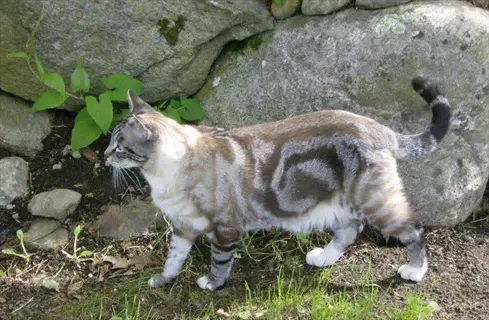
Classic Tabby
- Appearance: Bold marbled swirls create distinctive bullseye patterns on each side accompanied by butterfly-shaped shoulder markings
- Genetic Basis: Requires expression of the agouti gene combined with recessive non-agouti alleles forming solid backgrounds
- Breed Examples: American Shorthair displays large whorls while Maine Coons show dramatic swirling patterns
- Pattern Detail: Darker ground colors sharply contrast with lighter backgrounds producing striking marbled effects
- Unique Trait: Dorsal stripes typically extend continuously from the neck region down to the tail base
- Characteristic Feature: Circular target-like patterns consistently appear on both flanks of these felines
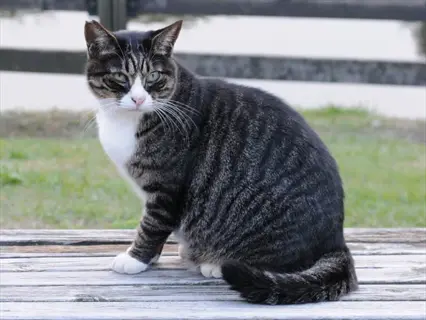
Mackerel Tabby
- Appearance: Narrow vertical stripes resembling fishbones run parallel along the sides with continuous spinal stripes
- Genetic Basis: Dominant tabby gene expression produces unbroken tiger-like stripe formations across the body
- Breed Examples: European wildcats exhibit this pattern while domestic tabbies maintain the fishbone structure
- Pattern Detail: Stripes maintain consistent spacing extending vertically from spine to belly without interruption
- Unique Trait: Delicate bracelet-like markings encircle the legs just above the paw areas forming distinct bands
- Characteristic Feature: Distinct necklace stripes typically encircle the chest region in symmetrical formation
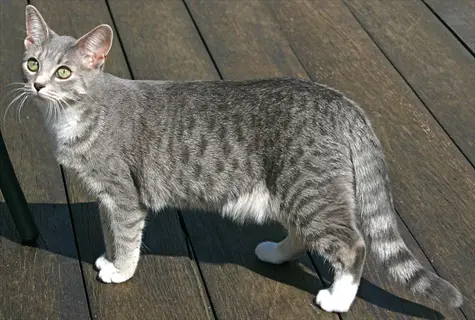
Spotted Tabby
- Appearance: Randomly distributed oval spots cover the body with variations from small dots to large markings
- Genetic Basis: Modified mackerel genes cause stripe fragmentation resulting in spot formations across the torso
- Breed Examples: Ocicats feature uniform spots while Egyptian Maus show smaller concentrated dot patterns
- Pattern Detail: Spot sizes range significantly with some breeds developing contrast-edged rosette formations
- Bengal Variation: These cats specifically display complex two-toned rosettes with dark outlines resembling wild jaguars
- Characteristic Feature: Spot alignment frequently follows invisible horizontal lines across the torso consistently

Ticked Tabby
- Appearance: Salt-and-pepper effect dominates with banded hairs creating subtle color variations throughout the coat
- Genetic Basis: Agouti gene produces alternating light and dark bands along individual hair shafts uniformly
- Breed Examples: Abyssinians demonstrate uniform ticking while Somalis show longer-haired versions of this pattern
- Pattern Detail: Visible markings appear primarily on facial areas legs and tail sections with minimal body contrast
- Unique Trait: Sunlight interaction creates distinctive shimmering effects across the coat during movement
- Characteristic Feature: Fur parting reveals multiple colored bands on single hairs confirming the pattern identity
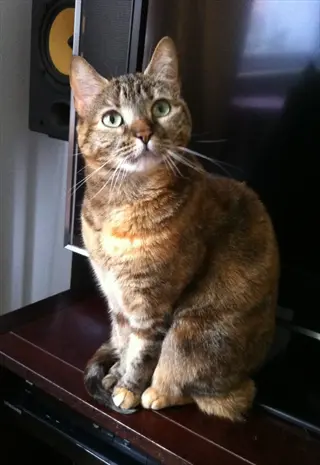
Torbie Pattern
- Appearance: Tabby stripes integrate with tortoiseshell patches creating mosaic-like patterns across the body surface
- Genetic Basis: Combines tabby genes with tortoiseshell genetics influenced by X-chromosomes determining color distribution
- Breed Examples: Cornish Rex displays tight curls while Scottish Folds show folded-ear variations of this pattern
- Pattern Detail: Stripes manifest exclusively within colored patches avoiding white fur areas completely
- Unique Trait: Orange patches consistently display tabby markings due to pheomelanin expression properties
- Characteristic Feature: Striped patterns remain contained within tortoiseshell color blocks exclusively without crossover
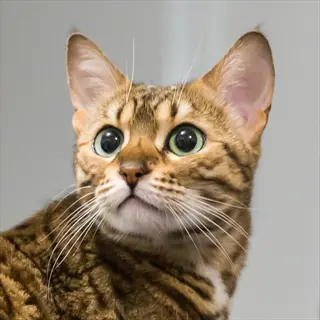
Rosetted Tabby
- Appearance: Complex two-toned spots feature dark outlines surrounding lighter centers consistently across the body
- Genetic Basis: Selective breeding enhances natural spotted tabby contrast genetics significantly for visual impact
- Breed Examples: Bengals exclusively develop pawprint doughnut or arrowhead-shaped rosettes with high definition
- Pattern Detail: Rosettes maintain darker perimeters contrasting sharply with interior coloring creating dimensional effects
- Unique Trait: Patterns form interconnected horizontal chains along dorsal and flank regions systematically
- Characteristic Feature: Rosette arrangements typically align horizontally rather than vertically oriented on the body
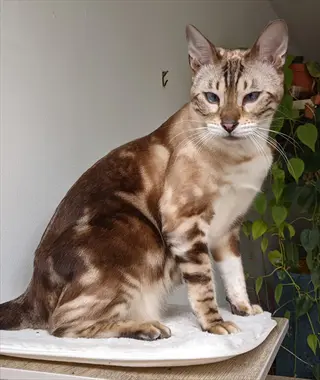
Marbled Tabby
- Appearance: Swirling horizontal patterns flow across the coat resembling marble stone formations
- Genetic Basis: Modified classic tabby genetics produce elongated swirling pattern variations
- Breed Examples: Bengals demonstrate dramatic flowing patterns with minimal spotting interference
- Pattern Detail: Interconnected horizontal streaks create continuous water-like movement illusions
- Unique Trait: Walking motion generates optical illusions of pattern movement across the coat
- Characteristic: Asymmetrical designs typically appear distinctly different on opposing sides
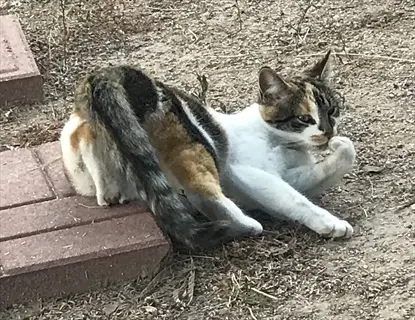
Patched Tabby
- Appearance: Defined color blocks separated by sharp boundaries contain internal tabby markings within colored sections
- Genetic Basis: Tabby genes combine with white spotting genetics creating distinct sections divided by pigment absence
- Breed Examples: Maine Coons display large patches while Norwegian Forest Cats show medium-sized divisions
- Pattern Detail: Tabby patterns appear exclusively within colored areas avoiding white sections completely
- Unique Trait: Facial markings align precisely with natural color division boundaries consistently across individuals
- Characteristic Feature: Stripes terminate abruptly exactly at patch borders without continuation into adjacent areas

Ticked Tabby Variations
- Appearance: Color spectrum ranges from cool blue-grey tones through warm cinnamon shades across different breeds
- Genetic Basis: Agouti gene interacts with color dilution genes producing diverse palettes and saturation levels
- Breed Examples: Singapuras display sepia tones while Abyssinians exhibit ruddy colorations in their ticking patterns
- Pattern Detail: Band density determines overall saturation intensity across the entire coat uniformly
- Unique Trait: Juvenile markings present during kittenhood completely disappear during maturation processes
- Characteristic Feature: Ticking creates iridescent visual effects particularly noticeable during feline movement sequences
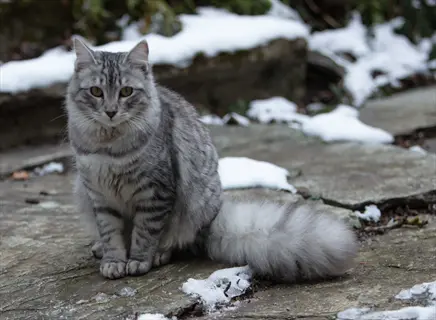
Silver Tabby
- Appearance: Black markings stand dramatically against pure silver-white background fur creating maximum contrast
- Genetic Basis: Inhibitor genes prevent pigment development at hair bases producing distinctive metallic sheen
- Breed Examples: Persians show this metallic effect while British Shorthairs exhibit cool-toned silver variations
- Pattern Detail: Maximum contrast occurs between dark patterns and light ground coloring throughout the coat
- Unique Trait: Paw pads commonly display distinctive two-tone pink and black coloring combinations
- Characteristic Feature: Silver fur presents nearly white appearance maintaining cool undertones consistently across breeds
Bicolor and Tuxedo Patterns
Bicolor coats are made up of at least 33 percent white and another color, providing a striking contrast in the coat of the cat. The white color is caused by a mutation in the KIT gene. This gene mutation restricts pigment production to certain areas.
The tuxedo pattern produces stately feline elegance. Imagine a cat wearing a black jacket over a white shirt. American Shorthairs often have this exquisite symmetry. The white chest and paws stand out against the dark backs.
Other variations are the *van pattern*, which displays color only on the head and tail. This is the more simplistic design used by Turkish Vans. *Harlequin patterns* have color patches irregularly placed over the body, the same as those used by Maine Coons. *Mask-and-mantle* cats have colored capes over white bodies.
I previously fostered a cap-and-saddle type of Persian. She had a white coat with distinct gray markings. The saddle followed her spine just right. This pattern is sporadic and shows expression of the extreme white spotting gene.
Tuxedo Pattern
- Appearance: Predominantly black body with white chest, belly, paws, and facial markings resembling formal wear
- Genetic Basis: Moderate expression of the white spotting gene creating symmetrical markings
- Breed Examples: American Shorthair, British Shorthair, Domestic Shorthair with classic presentation
- Pattern Detail: Symmetrical white markings typically cover 25-40% of the body surface area
- Unique Trait: Often features a white 'bowtie' marking under the chin area
Van Pattern
- Appearance: Primarily white body with colored tail and small head spots between or covering ears
- Genetic Basis: High-expression white spotting gene limiting pigment to extremities
- Breed Examples: Turkish Van, Japanese Bobtail with signature color-restricted patterns
- Pattern Detail: Color covers less than 30% of body concentrated at opposite ends
- Unique Trait: Often has odd-colored eyes matching the pattern
Harlequin Pattern
- Appearance: Mostly white coat with random colored patches scattered across body
- Genetic Basis: Variable expression of piebald gene creating asymmetric markings
- Breed Examples: Maine Coon, Norwegian Forest Cat displaying dramatic patchwork
- Pattern Detail: Patches appear randomly distributed without predictable positioning
- Unique Trait: Often features mismatched paw colors between legs
Mask-and-Mantle Pattern
- Appearance: Colored back, head, and upper face with white lower face, chest, and legs
- Genetic Basis: Controlled pigment migration creating sharp horizontal color division
- Breed Examples: Persian, Ragdoll with distinct two-tone appearance
- Pattern Detail: White covers 30-50% of body concentrated on lower half
- Unique Trait: Appears to wear a 'mask' over eyes and 'cape' on back
Cap-and-Saddle Pattern
- Appearance: White body with colored 'cap' on head and 'saddle' patch on back
- Genetic Basis: Extreme white spotting leaving minimal pigment areas
- Breed Examples: Siberian, Turkish Angora with isolated color patches
- Pattern Detail: Colored areas cover less than 30% of total body surface
- Unique Trait: Saddle patch follows spine alignment precisely
Bicolor Definition
- Core Concept: Bicolor patterns require at least 33% white fur combined with another color
- Genetic Basis: Controlled by the dominant white spotting gene (KIT gene mutation)
- Pattern Range: Includes tuxedo, van, harlequin, mask-and-mantle, and cap-and-saddle variations
- Visual Identification: Characterized by sharp boundaries between white and colored areas
Tortoiseshell and Calico Patterns
Tortoiseshells have a lovely combination of black and orange fur. The two colors blend like melted chocolate and caramel. There is very little white in true torties. This pattern causes a delightful marble effect. No two tortoiseshells look alike.
The coloration of the Calico is characterized by the introduction of white, which makes the variety tricolored in appearance. Distinct patches of black, orange, and white break up the coloring with clear lines. Japanese Bobtails frequently exhibit this brilliant coloring. The white of the calico is due to the spotting genes. Calicos are visually different from tortoise shells in that their colors are separate and distinct.
These patterns are related to X-chromosome genetics. Female cats possess two X chromosomes, which enable them to express colors associated with both orange and black pigments. Male cats hardly exhibit these patterns, but they can occur in exceptional situations under rare conditions, such as the presence of rare genetic conditions with XXY chromosomes.
Dilute colors soften standard colors. British Shorthairs are blue-gray, not black. Cream replaces intense orange colors. Dilution genes weaken the pigments. This allows for beautiful pastel tortoiseshell and calico patterns.
Classic Tortoiseshell
- Appearance: Swirled black and orange fur with minimal white accents
- Genetic Basis: Random X-chromosome inactivation creates patchy color distribution
- Breed Examples: Cornish Rex, American Shorthair with tight color blending
- Unique Trait: Each cat has completely unique pattern
- Gender Exception: Rare males have XXY chromosome configuration
Dilute Tortoiseshell
- Appearance: Blue-gray and cream fur replacing black and orange tones
- Genetic Basis: Dilution gene modifies base colors while maintaining pattern
- Breed Examples: British Shorthair, Scottish Fold with softer coloration
- Unique Trait: Often appears more pastel-toned than classic tortoiseshell
- Identification: Paw pads may show mixed pink and gray coloring
Classic Calico
- Appearance: Distinct black, orange, and white patches with clear boundaries
- Genetic Basis: White spotting gene separates colors into defined sections
- Breed Examples: Japanese Bobtail, Manx with bold tricolor patterns
- Unique Trait: White usually appears on underside and legs
- Pattern Detail: Orange patches always show tabby markings
Dilute Calico
- Appearance: Blue, cream, and white patches creating softer tricolor effect
- Genetic Basis: Dilution gene lightens black to blue and orange to cream
- Breed Examples: Persian, Maine Coon with muted pastel coloration
- Unique Trait: Often has heterochromia
- Identification: Nose leather shows mixed pink and gray pigmentation
Tortico Pattern
- Appearance: Hybrid pattern showing both blended tortie areas and distinct calico patches
- Genetic Basis: Intermediate white spotting expression
- Breed Examples: Norwegian Forest Cat, Siberian with transitional patterns
- Unique Trait: Shows characteristics of both tortoiseshell and calico
- Identification: Blended sections typically appear on back with distinct patches on sides
Specialized Patterns
Colorpoint patterns respond to temperature like mood rings. Siamese cats demonstrate this phenomenon distinctly. Their ears, paws, and tails develop dark coloration, while body parts that retain warmth remain light in color. The distribution of color occurs because heat inhibits the enzymes that produce pigment.
Smoke and shaded patterns create magical effects in fur. The smoke cat has hair that is dark at the tip, but light at the base. By parting the hair, these differences become visible. Gradual color changes characterize the shaded patterns. This elegant shadiness of coloring is very characteristic of the Persian cat.
Chinchilla coats appear to have been dusted with glitter. Each hair has a dark tip extending over a white base. The frosty effect is produced by restricting pigment in some hair. British Shorthairs demonstrate this effect well, as their green eyes appear to glow against their glittering fur.
The salmiak pattern is a reversal of typical smoke coloring. Discovered in Finnish cats more recently, the darkness at the roots fades to light tips. This uncommon trait results in a salt-and-pepper appearance. There are fewer than fifty cats in the world that exhibit this unique pattern.
Colorpoint Patterns
- Breed Examples: Siamese (seal point), Himalayan (flame point)
- Visual Development: Kittens born white, develop points as they age
- Temperature Effect: Cooler body areas show darker pigmentation
- Variations: Includes lynx (tabby) points and tortie points
Smoke and Shaded Patterns
- Visual Distinction: Smoke: 50-80% pigment coverage; Shaded: 25-50%
- Breed Examples: Maine Coon (black smoke), Persian (blue smoke)
- Identification: Appears solid until fur is parted to reveal contrast
- Silver Variants: Inhibitor gene creates silver undercoat effect
Chinchilla Pattern
- Breed Prevalence: Persian, Exotic Shorthair, British Shorthair
- Color Variations: Silver chinchilla (black tips), golden (brown tips)
- Eye Characteristic: Often features green or blue-green eye color
- Visual Effect: Frosted tips create shimmering appearance in light
Salmiak Pattern
- Discovery Origin: Emerged in Finnish feral cat population
- Genetic Identification: Recent research identified the gene variant
- Appearance Effect: Creates salt-and-pepper look as fur grows
- Rarity Status: Fewer than 50 documented cases worldwide
Rosetted Patterns
- Exclusive Breeds: Bengal, Savannah cats
- Pattern Types: Pawprint, doughnut, arrowhead-shaped rosettes
- Genetic Origin: Enhanced from spotted tabby through breeding
- Visual Impact: High contrast between spots and background
5 Common Myths
Many people believe that coat color will in some manner determine certain personality traits and certain tendencies in the behavior of the pet feline.
There is no known relationship between coat color and personality. Temperament results from genetic heredity independent of pigmentation, and in addition to this, environmental factors such as early socialization experiences and individual bringing up enter into the development of behavior. Trait in behavior show extreme variations in the case of cats of a given color, but cats of all colors show the same ranges of affectionate and playful and reserved or indifferent behavior when in environments otherwise comparable.
There is a popular misconception that tortoiseshell-patterned cats are invariably female.
Although tortoiseshell patterns occur in most females as an expression of the genetics involved with pigmentation from the X chromosome, there are male tortoiseshell cats occurring by chromosomal abnormalities. The male tortoiseshell is a rare animal. They can exist, because their unusual chromosomal configurations give them the added ability to express black and orange pigments, but they are indeed quite rare when compared to females in the general population of felines.
It is a commonly held belief that black cats are more aggressive than other colored cats.
There is no relationship between coat color and aggressiveness. Feline behavior tends to be more related to environmental influences such as socialization background and stress factors than it is to colors of fur. Black cats show the same distribution of temperaments and personalities as other colored cats. Individual characteristics in felines are determined by training and experience rather than by coat color.
Many mistakenly believe that cats with white coats are albino animals devoid of any pigmentation.
Albinism is of a fundamentally different genetic character than are dominant white coats. The albino cat is entirely deficient in the production of melanin pigment, due to certain enzyme mutations, and has the characteristic pink eyes and skin. The white-coated cat has pigment cells that are functional, but their development is inhibited by the dominant W gene, and generally both the normal eye coloration and skin pigmentation are retained in cats with white coats, in all cases will be found beneath the coat of white hair. It is therefore justifiable to say that most white cats are not albino animals in view of their appearance of color.
People often mistakenly believe that tabby describes a specific cat breed rather than a universal coat pattern.
Tabby refers exclusively to coat patterns occurring across numerous breeds, not a breed itself. Distinctive tabby markings like the forehead 'M' and characteristic striped or swirled patterns appear in over thirty recognized breeds from Maine Coons to Abyssinians. Breed standards define physical structure attributes while tabby patterns represent universal genetic expressions unrelated to pedigree classification systems.
Conclusion
Cat fur designs are an exhibition of the genetic creativity of nature. Over twenty genes interact, resulting in a magnificent variety. This complex system produces the tabby twirls, the calico patches, and the colorpoint contrasts. Each fur design reflects a different genetic code. These variations of form and color show the march of feline evolution.
Bear in mind, though, that patterns in no way can predict temperament or health, and black cats do not contribute any more aggressiveness than do the oranges. There is no good reason to believe that calicos need any special medical care or attention. Temperament depends on environment and individual history. All cats are entitled to the same good care and understanding.
Recognizing patterns aids in understanding the awesome phenomena of felinity. You see how temperature contributes to producing Siamese points. You know why tortoiseshells are nearly exclusively female. This understanding acknowledges and reveals nature's prowess. It reminds us that we are linked to biological wonders through our everyday animals.
Treat all cats with the same kindness and respect. Patterns are lovely but shallow. The focus should be on love and basic care. Cats offer companionship regardless of whether they are striped or spotted. We appreciate their uniqueness, but we also satisfy their needs as common animals.
External Sources
Frequently Asked Questions
What are the main cat coat patterns?
Primary patterns include tabby variations like classic, mackerel, spotted; bicolor/tuxedo patterns; tortoiseshell blends; calico tricolor; and specialized expressions like colorpoint, smoke, chinchilla. Each pattern demonstrates unique genetic mechanisms controlling pigment distribution and hair shaft banding.
What determines a cat's coat pattern?
Coat patterns result from complex genetic interactions:
- Over 20 genes control pigment types (eumelanin/pheomelanin), distribution, and hair banding
- X-chromosome genes determine tortoiseshell/calico patterns in females
- Temperature-sensitive genes create colorpoint patterns
- White spotting genes regulate bicolor markings
Do coat patterns affect cat behavior?
No scientific evidence links coat patterns to personality traits. Behavioral studies confirm temperament develops through:
- Genetic inheritance unrelated to pigmentation
- Early socialization experiences
- Environmental factors and individual upbringing
- All patterns show similar ranges of playful, affectionate, or reserved behaviors
Which pattern is exclusively female?
Tortoiseshell and calico patterns appear almost exclusively in females due to X-chromosome genetics requiring two X chromosomes for expressing both orange and black pigments simultaneously. Rare males occur through genetic abnormalities but remain exceptional cases.
Can a cat's coat pattern change?
Patterns remain genetically fixed, but some visual changes occur:
- Colorpoint cats darken extremities as they age
- Sun exposure may bleach dark coats
- Health conditions like vitiligo cause depigmentation
- Kitten 'ghost tabby' markings fade by adulthood
What is the rarest cat pattern?
The salmiak pattern is exceptionally rare with fewer than 50 confirmed cases. This newly documented pattern shows reversed smoke coloring with dark roots and light tips, currently observed only in specific Finnish feral cat populations.
What is a ghost tabby pattern?
Ghost tabby refers to faint tabby markings visible on kittens that disappear by adulthood. These transient patterns occur when agouti genes express weakly during early development, leaving subtle stripes or swirls that fade completely as permanent coat colors emerge.
Do tabby cats always have forehead M?
Yes, all tabby variants feature the distinctive 'M' marking on the forehead. This universal trait stems from ancient tabby genetics shared across breeds, serving as a key identifier regardless of specific pattern variations like mackerel stripes or classic swirls.
What is a fever coat?
Fever coat is a temporary condition where kittens develop unusually light or silver-tipped fur when the mother experiences high stress or illness during pregnancy. This results from disrupted pigment cell migration, with normal coloration emerging after the first molt.
Are calico and tortoiseshell the same?
No, they differ significantly:
- Tortoiseshell: Blended black/orange with minimal white
- Calico: Distinct black, orange, and white patches
- Genetic distinction: Calicos require white spotting genes
- Visual separation: Torties show brindled mixes; calicos have clear color blocks
